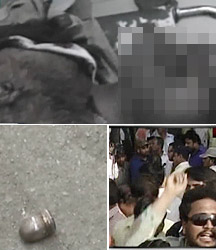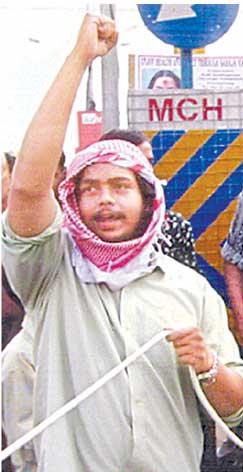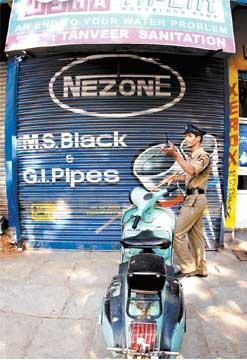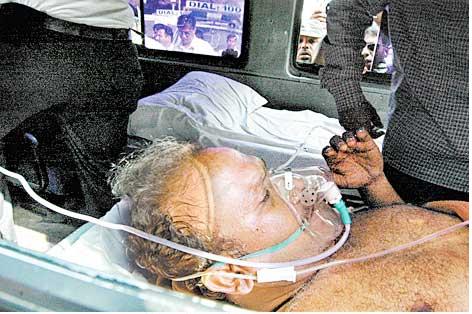August 26, 2007
Source: http://www.rediff.com/news/2007/aug/26raman.htm


During a visit to Hyderabad on July 31 and August 1, 2007, I was told that the influence of the Lashkar-e-Tayiba and the Harkat-ul-Jihad-al-Islami was so pervasive in the local Muslim community that many members of the community kept in their houses pictures of Pakistani President Pervez Musharraf and Osama bin Laden.
Many government servants also complained that the government was aware of this, but the political leadership lacked the will to act against the extremist elements in the local Muslim community.
This became evident subsequently in the attempted assault on Taslima Nasreen, the Bangladeshi writer, by some prominent leaders of the local Muslim community when she had gone to Hyderabad to address a meeting. The political leadership, which was hesitant to act against the Muslim leaders involved, played down the incident.
The Pakistani jihadi organisations and Al Qaeda look upon Hyderabad as a Muslim land historically belonging to the Ummah, which needs to be 'liberated' from the control of non-Muslims.
They have been systematically setting up sleeper cells in the local Muslim community since 1995 and also among the Muslims from Hyderabad working in the Gulf. There were also reports of linkages with Bosnia.
Whenever there has been a major jihadi incident in south India, the police investigation has been bringing out a Hyderabad link, thereby indicating that Hyderabad serves as the GHQ of the pro-Al Qaeda jihadis in the South.
During the visit of President George Bush to India in March 2006, Hyderabad was one of the cities which saw anti-US demonstrations by sections of the Muslim community.
Some Muslim demonstrators allegedly carried photos of bin Laden and shouted pro-bin Laden slogans.
If we do not get out of our denial mode and act firmly against the extremist and anti-national elements, a 9/11 is waiting to happen in our homeland.
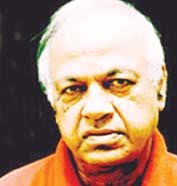 |
Bahukutumbi Raman is an expert on security and anti-terrorism operations. He headed the Counter-Terrorism Division of the Research & Analysis Wing (R&AW) for six years. He has been a member of various special task forces related to security and intelligence issues. An internationally acclaimed writer and lecturer, he regularly contributes articles to various national and international publications on security-related topics.







